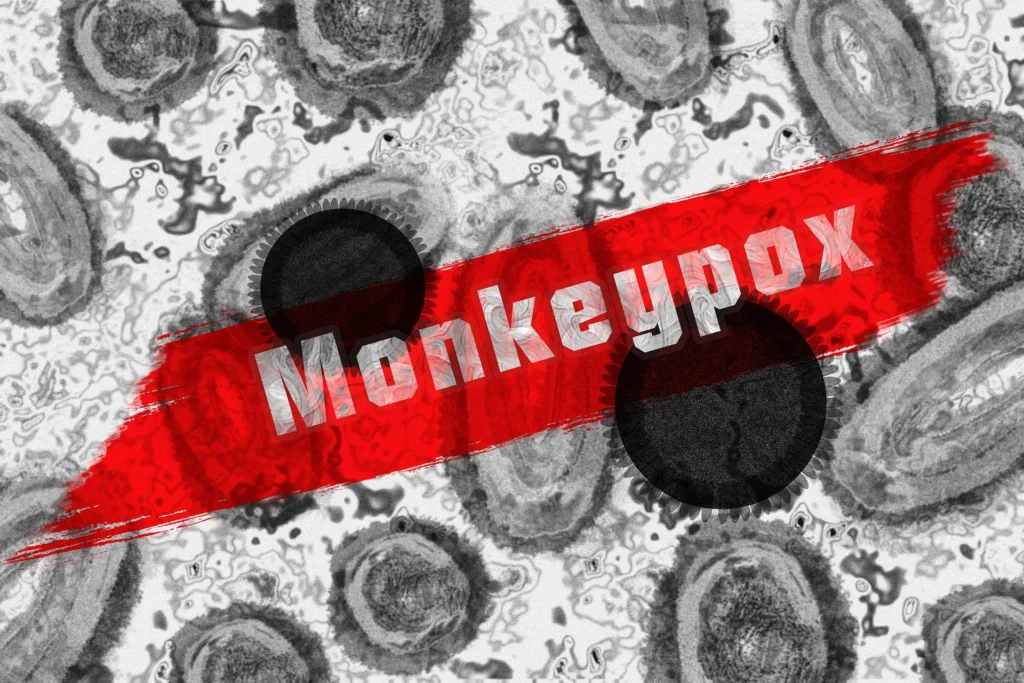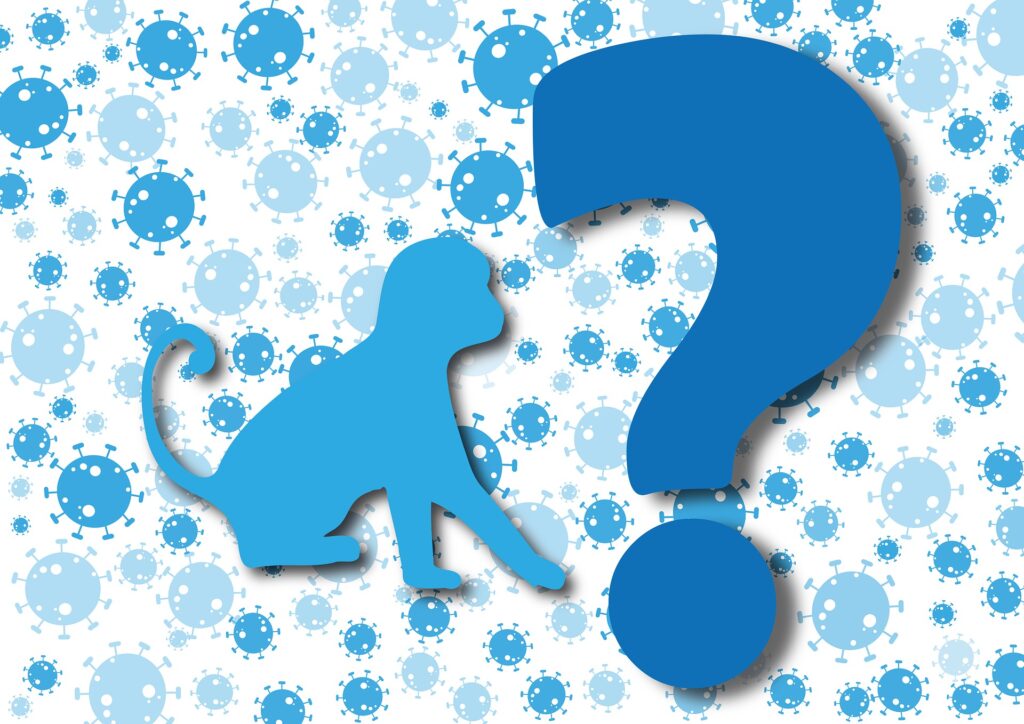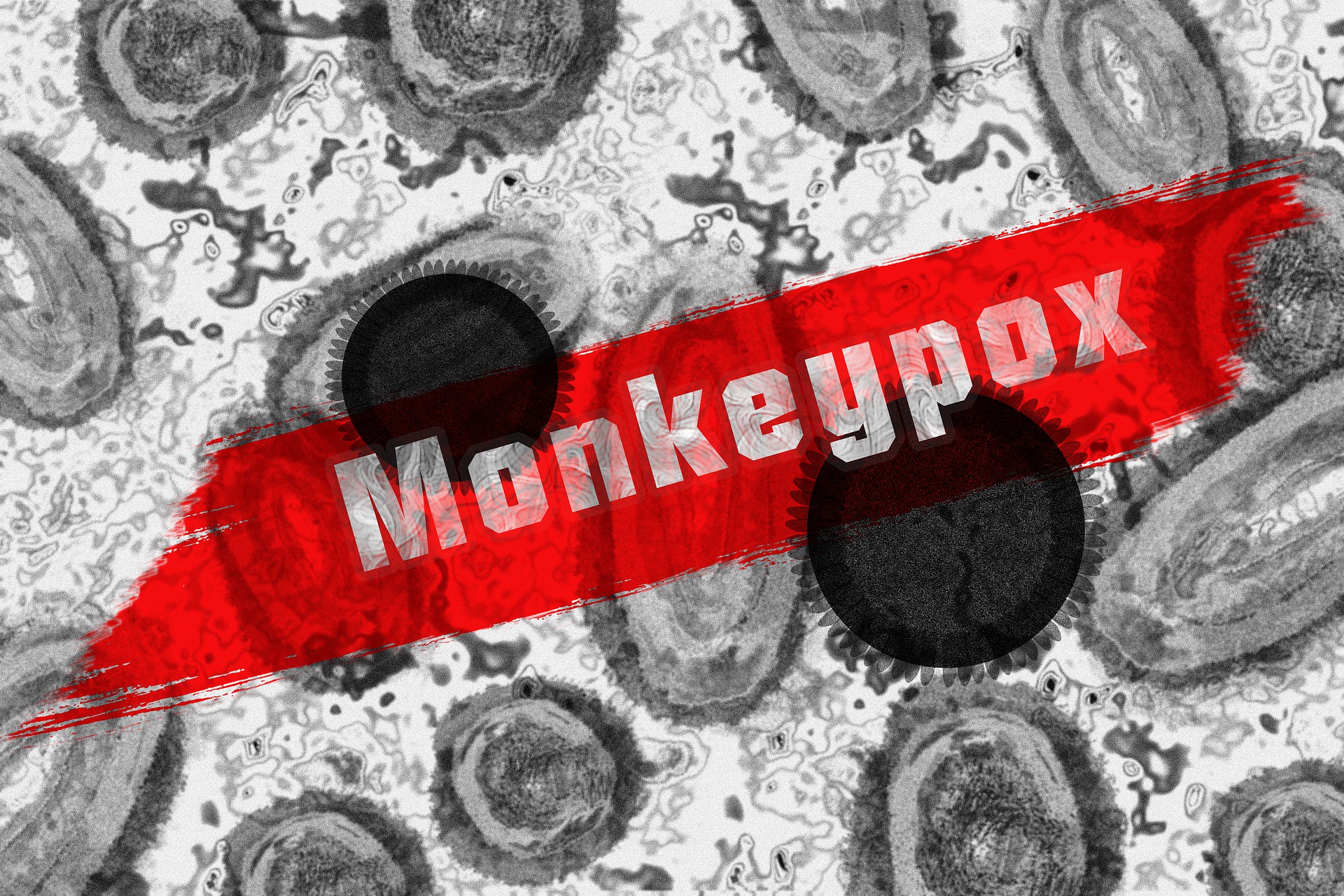Monkeypox is a rare viral disease that belongs to the same family as smallpox. It was first discovered in 1958 when outbreaks occurred in monkeys kept for research. Since then, several outbreaks have been reported in various parts of the world, including Africa, Central America, and even the United States. Monkeypox spreads through close contact with infected animals or humans.
Monkeypox is a viral disease that primarily affects animals, but it can also infect humans. In recent years, there have been increasing concerns about monkeypox cases, especially in children. Understanding the symptoms of monkeypox in kids is crucial for early detection, proper diagnosis, and prompt treatment. In this article, we will explore the various symptoms of monkeypox in children and discuss important information related to this viral infection.

What is Monkeypox?
Monkeypox is caused by the Monkeypox virus, a member of the Orthopoxvirus genus. The virus is zoonotic, meaning it can be transmitted from animals to humans. While the disease is generally mild, severe cases can occur, especially in individuals with weak immune systems. This virus spreads primarily through direct contact with infected animals or through respiratory droplets from infected humans.
Monkeypox Transmission
Monkeypox transmission occurs through direct contact with infected animals, such as rodents, monkeys, and squirrels. It can also spread through respiratory droplets from infected individuals. Additionally, coming into contact with body fluids or contaminated objects, such as bedding or clothing, can also lead to transmission.
Monkeypox Symptoms in Kids

Monkeypox is a rare viral disease that primarily affects animals but can be transmitted to humans. While children can contract monkeypox, they generally experience milder forms of the disease compared to adults. The symptoms of monkeypox in kids can vary, but here are the common signs to watch for:
1.Fever: Monkeypox typically begins with a fever, which is often the first noticeable symptom in children. The child’s body temperature may rise above normal levels, indicating an immune response to the viral infection.
You may also like.9 Natural Home Remedies for Cough and Cold
10Best Home remedies for fever-fever treatment at home
2.Fatigue: Children with monkeypox may experience fatigue or a general sense of tiredness. This symptom can make them feel weak and less energetic than usual.
3.Rash: A rash is a hallmark symptom of monkeypox. It usually appears after the onset of fever, starting on the face before spreading to other parts of the body. The rash evolves through different stages, including raised bumps, fluid-filled blisters, and crusts.
4.Headache: Children may complain of a headache as a result of the viral infection. The severity can vary, from mild to more intense headaches.
5.Muscle Aches: It can cause muscle aches or body pains in children. This discomfort may be similar to what is experienced during a typical viral illness.
6.Swollen Lymph Nodes: Children with this pox may develop swollen lymph nodes, particularly in the affected areas where the rash is present. These swollen glands can be tender to the touch.
7.Sore Throat: Some children may experience a sore throat as part of the illness. This symptom can cause discomfort and difficulty swallowing.
8.Chills: Children with this poxmay have episodes of chills or feeling cold, often accompanied by shivering. This is another common manifestation of the body’s response to the infection.
9.Nausea and Vomiting: In some cases, children with this pox may experience nausea, which can lead to vomiting. This gastrointestinal symptom can contribute to a general feeling of malaise.
10.Backache: Monkeypox can occasionally cause back pain in children. This symptom may be localized or extend along the spine, leading to discomfort and limited mobility.
It is important to note that the severity of symptoms can vary from child to child. While some children may exhibit a mild form of the disease with only a few symptoms, others may experience more pronounced manifestations. In rare instances, severe cases of it can occur in children, necessitating immediate medical attention.
If a child exhibits any of these symptoms, it is crucial to seek medical care promptly. It is a contagious disease, and early diagnosis can aid in appropriate management and prevention of further spread. Healthcare professionals can provide the necessary guidance and treatment to help children recover from this and alleviate their symptoms.
How does Monkeypox spread
Monkeypox is primarily spread through direct contact with infected animals or humans. Here are the common modes of transmission:
1.Animal-to-Human Transmission: It can be transmitted to humans through close contact with infected animals, primarily rodents like squirrels, rats, and monkeys. Direct contact with their bodily fluids, such as blood, saliva, or lesions, can lead to transmission.
2.Human-to-Human Transmission: It can also be transmitted between humans. This occurs through close contact with infected individuals, particularly through respiratory droplets from coughing or sneezing, contact with skin lesions or scabs, or handling of contaminated objects like bedding or clothing.
3.Airborne Transmission: In rare cases, airborne transmission of it has been reported. This means that the virus can be spread through respiratory droplets over longer distances, similar to how some other respiratory diseases are transmitted.
4.Indirect Transmission: It can be indirectly transmitted through contact with objects contaminated by the virus, such as clothing, bedding, or surfaces. If a person touches these contaminated objects and then touches their face, mouth, or eyes, they can become infected.
How long does Monkeypox last
The duration of monkeypox can vary from person to person, and it depends on several factors, including the individual’s immune response and the severity of the infection. Generally, the illness lasts for about 2 to 4 weeks. Here is a breakdown of the different stages and timelines associated with monkeypox:
1.Incubation Period: After exposure to the virus, there is an incubation period before symptoms appear. In monkeypox, this period typically ranges from 5 to 21 days, with an average of 7 to 14 days.
2.Prodromal Stage: This stage marks the onset of symptoms, including fever, fatigue, headache, muscle aches, and swollen lymph nodes. The prodromal stage usually lasts for a few days, typically 1 to 3 days.
3.Rash Stage: The appearance of a rash is a defining characteristic of monkeypox. The rash typically begins on the face and then spreads to other parts of the body. The rash progresses through different stages, including raised bumps, fluid-filled blisters, and crusts. This stage can last for about 1 to 2 weeks.
4.Resolution Stage: As the illness progresses, the rash begins to heal, and the symptoms gradually subside. The duration of the resolution stage varies but usually lasts for 1 to 2 weeks.
It is important to note that the overall duration of monkeypox can be influenced by factors such as the individual’s age, general health, and the effectiveness of medical care received. In some cases, complications may occur, which can extend the duration of illness and recovery time.
You may also like.10Best Home remedies for fever-fever treatment at home
10 Best Home Remedies for Vomiting in Children
How to prevent Your Kids from Monkeypox
Preventing monkeypox involves taking several precautions to reduce the risk of exposure and transmission. Here are key preventive measures:
1.Avoid Direct Contact with Infected Animals: This is primarily transmitted through close contact with infected animals, such as rodents or monkeys. Avoid handling or coming into direct contact with these animals, especially if they exhibit symptoms of illness.
2.Practice Good Hygiene: Maintain proper hygiene practices to reduce the risk of infection. This includes regular and thorough handwashing with soap and water, especially after contact with animals, contaminated objects, or infected individuals.
3.Use Personal Protective Equipment: When in close contact with infected individuals or handling potentially contaminated materials, use personal protective equipment (PPE) such as gloves, masks, and gowns to minimize the risk of transmission.
4.Isolate Infected Individuals: If someone in your household or community is diagnosed with this pox, ensure that they are isolated to prevent further spread of the virus. Follow the guidance of healthcare professionals and local health authorities regarding the appropriate isolation measures.
5.Practice Respiratory Hygiene: Cover your mouth and nose with a tissue or your elbow when coughing or sneezing to prevent the spread of respiratory droplets. Dispose of tissues properly and perform hand hygiene immediately after.
6.Maintain Clean Living Environment: Keep living areas, especially those with animals, clean and hygienic. Regularly clean and disinfect surfaces and objects that may come into contact with the virus.
7.Stay Informed and Follow Health Guidelines: Stay updated on monkeypox outbreaks and follow the guidance provided by local health authorities. Stay informed about preventive measures, vaccination campaigns (if available), and any travel advisories related to this pox.
8.Seek Medical Care: If you develop symptoms of monkeypox or suspect exposure to the virus, seek medical attention promptly. Early diagnosis and appropriate medical care can aid in managing the illness and preventing further spread.
Is Monkeypox a risk for kids
It can affect individuals of all ages, including children. While children can contract monkeypox, they generally experience milder forms of the disease compared to adults. However, it is important to note that children, like adults, can still be at risk of contracting the virus and developing symptoms.
The risk of This pox for children is influenced by factors such as their immune system strength, general health status, and level of exposure to infected animals or individuals. Children who come into close contact with infected animals or humans have a higher risk of contracting the virus.
Although children may experience milder symptoms, it is still important to take precautions to prevent monkeypox transmission. This includes avoiding direct contact with infected animals, practicing good hygiene, using personal protective equipment when necessary, and following the guidance of healthcare professionals and local health authorities.
Parents and caregivers should be vigilant and watch for any signs of illness in children, including fever, rash, fatigue, headache, and swollen lymph nodes. If any symptoms of monkeypox are observed, seeking medical attention promptly is crucial for proper diagnosis, management, and prevention of further spread.
It is essential to stay informed about monkeypox outbreaks and follow the guidance provided by health authorities to protect children and minimize their risk of contracting the virus. By taking appropriate preventive measures, parents and caregivers can help reduce the risk of monkeypox in children and promote their overall well-being.
What is the Treatments of Monkeypox in kids
There is no specific antiviral treatment available for monkeypox. However, supportive care can help manage the symptoms and promote recovery in children. Here are some treatment approaches commonly used for children with monkeypox:
1.Symptom Management: Medications such as acetaminophen or ibuprofen can be given to children to help reduce fever, relieve pain, and alleviate discomfort associated with muscle aches or headache. It is important to follow the recommended dosage guidelines for children and consult with a healthcare professional for appropriate medication options.
2.Hydration: Encouraging children to drink plenty of fluids, such as water or clear fluids, can help prevent dehydration and support the body’s healing process.
3.Rest: Adequate rest is essential for children’s recovery. Encourage them to rest and limit physical activity until they have fully recovered.
4.Skin Care: Taking care of the skin is important during the rash stage of monkeypox. Keeping the affected areas clean and dry can help prevent secondary infections. Over-the-counter creams or ointments may be recommended to soothe itching or promote healing of the rash.
5.Isolation and Infection Control: If a child is diagnosed with monkeypox, they should be isolated to prevent further spread of the virus. Follow the guidance provided by healthcare professionals and local health authorities regarding isolation measures and infection control practices.
6.Monitoring and Follow-up: Regular monitoring of the child’s symptoms and overall condition is necessary. Follow-up appointments with healthcare professionals may be recommended to assess the progress of the illness and ensure proper recovery.
It is important to consult with healthcare professionals for appropriate guidance and treatment options specific to each child’s condition. They can provide individualized care, monitor the child’s progress, and address any concerns or complications that may arise.
Is there any vaccine available for Monkeypox?
No, there is no vaccine available for monkeypox ,ButThe smallpox vaccine, known as the vaccinia vaccine, can provide some degree of cross-protection against monkeypox. This is because monkeypox and smallpox are related viruses and share similarities in their structure.
The smallpox vaccine has been found to be effective in preventing monkeypox infection or reducing the severity of the disease if an individual does contract monkeypox after vaccination. The vaccine works by stimulating the immune system to produce antibodies that can recognize and fight off the monkeypox virus.
However, it is important to note that the smallpox vaccine is not routinely administered as part of routine childhood immunization programs. The vaccination strategy for monkeypox depends on the specific circumstances and recommendations of health authorities in regions affected by monkeypox outbreaks or with a high risk of exposure.
The availability and administration of the smallpox vaccine may vary depending on factors such as the prevalence of monkeypox in a particular area, the likelihood of exposure, and the individual’s specific risk factors. In areas where monkeypox outbreaks occur, targeted vaccination campaigns may be conducted to protect high-risk populations, such as healthcare workers and individuals in close contact with infected individuals or animals.
If you have concerns about monkeypox and the availability of the vaccine in your area, it is recommended to consult with healthcare professionals or local health authorities. They can provide up-to-date information on vaccination recommendations and guide you on the best course of action based on the specific circumstances.
When should we consider testing a kid for Monkeypox
Testing for monkeypox in a child should be considered if they exhibit symptoms consistent with the disease and there is a reasonable suspicion of exposure to the virus. The decision to test should be made in consultation with healthcare professionals and local health authorities. Here are some situations in which testing for monkeypox in a child may be recommended:
1.Presence of Typical Symptoms: If a child presents with symptoms such as fever, rash, swollen lymph nodes, and other signs commonly associated with monkeypox, healthcare professionals may consider testing for the virus. These symptoms may also be accompanied by a history of potential exposure to infected animals or individuals.
2.Epidemiological Factors: If there is an ongoing outbreak of monkeypox in the region or if the child has had close contact with individuals who have been diagnosed with monkeypox, testing may be recommended. This includes situations where the child has visited or resided in areas with documented monkeypox cases.
3.Differential Diagnosis: Since the symptoms of monkeypox can resemble those of other illnesses, testing may be necessary to confirm the diagnosis and rule out other possible causes. This is particularly important if the child’s symptoms do not improve with standard treatments or if there are atypical features in their presentation.
4.Surveillance and Public Health Monitoring: In some instances, testing may be conducted as part of surveillance efforts to monitor the prevalence and spread of monkeypox in a community or population. This helps in tracking the disease, implementing appropriate control measures, and providing accurate data for public health planning.
5.Testing for monkeypox typically involves collecting samples, such as blood, swabs from skin lesions or respiratory secretions, or other appropriate specimens. These samples are then sent to specialized laboratories equipped to detect and confirm the presence of the monkeypox virus through various laboratory techniques.
What precautions should recommend to the family if your child get Monkeypox

If a child in the family is diagnosed with monkeypox, it is crucial to take precautions to prevent the further spread of the virus. Here are some recommendations for the family:
1.Isolation: Isolate the affected child in a separate room or designated area to minimize contact with other family members and prevent the spread of the virus. Ideally, the child should have their own bathroom facilities if possible.
2.Hygiene Practices: Emphasize good hygiene practices for the entire family, including regular handwashing with soap and water for at least 20 seconds. Encourage everyone to wash their hands before and after contact with the affected child, after using the bathroom, and before preparing or consuming food.
3.Personal Protective Equipment (PPE): If close contact with the affected child is necessary, such as providing care or administering medication, consider using personal protective equipment (PPE) like gloves, masks, and gowns. Properly dispose of used PPE and perform hand hygiene afterwards.
4.Limit Close Contact: Minimize close contact between the affected child and other family members, especially those who are more vulnerable to infections, such as elderly individuals or individuals with weakened immune systems. Maintain a safe distance and avoid physical contact like hugging or kissing.
5.Environmental Cleaning: Clean and disinfect frequently touched surfaces and objects in the household regularly. Use appropriate disinfectants that are effective against the monkeypox virus. Pay extra attention to areas that the affected child may come into contact with, such as doorknobs, light switches, and toys.
6.Laundry Practices: Handle the affected child’s clothing, bedding, and towels with caution. Use gloves when handling dirty items and wash them separately using regular laundry detergent at the highest temperature recommended for the fabric.
7.Follow Healthcare Provider’s Instructions: Strictly follow the instructions and guidance provided by healthcare professionals regarding the care, treatment, and management of the affected child. Administer any prescribed medications as directed and seek medical attention if the child’s condition worsens or new symptoms arise.
8.Monitor Family Members: Keep a close eye on the health of other family members for any signs or symptoms of monkeypox. If any family member develops symptoms, seek medical advice promptly.
Should Parents Be Worried About Monkeypox?
Parents should be aware of monkeypox but there is no need for excessive worry. It is a rare viral disease that primarily occurs in certain regions of Central and West Africa. While it can cause illness, including a rash and flu-like symptoms, most cases of monkeypox are mild and self-limiting, especially in children.
The risk of monkeypox for parents and their children outside of affected areas is generally low. The virus is primarily transmitted through close contact with infected animals, such as rodents or monkeys, or through contact with infected humans. The spread from person to person is limited, and outbreaks are usually contained within specific communities or regions.
Taking general preventive measures can further reduce the risk of contracting monkeypox. These measures include avoiding direct contact with infected animals, practicing good hygiene such as regular handwashing, and following any relevant travel advisories or guidelines provided by local health authorities.
It is important to stay informed about the disease and its prevalence in your region. If there are any concerns or suspected cases of monkeypox, it is recommended to seek medical attention promptly. Healthcare professionals can provide accurate information, evaluate any potential risks, and offer appropriate guidance for prevention and care.
By staying informed, practicing good hygiene, and following the guidance of healthcare professionals, parents can help minimize the risk of monkeypox and provide a safe environment for their children.
Conclusion
In conclusion, monkeypox is a rare viral disease that can affect individuals, including children. While children may experience milder symptoms, it is still important to take precautions to prevent the spread of the virus. Good hygiene practices, avoiding direct contact with infected animals, and following the guidance of healthcare professionals and local health authorities are crucial preventive measures.
There is no specific treatment for monkeypox, but supportive care can help manage symptoms and promote recovery. The smallpox vaccine offers some cross-protection against monkeypox, although its availability and recommendations may vary.
If a child is suspected of having monkeypox, testing should be considered in consultation with healthcare professionals. Isolation, proper hygiene practices, and environmental cleaning are essential to prevent further transmission within the family.
While parents should be aware of monkeypox, excessive worry is not necessary, especially if they are outside the affected regions. By staying informed, practicing preventive measures, and seeking medical attention when needed, parents can help protect their children and minimize the risk of monkeypox.
Disclaimer: The information provided on this blog is for general informational purposes only and should not be considered as a substitute for professional medical advice, diagnosis, or treatment. Always seek the advice of your healthcare provider or qualified medical professional with any questions or concerns you may have regarding a medical condition. The use of any information on this blog is solely at your own risk. The authors and creators of this blog are not liable for any errors or omissions in the content or for any actions taken based on the information provided.
Read more.How to Cure a Sore Throat Fast? 12 Natural Remedies
9 Natural Home Remedies for Cough and Cold
COVID Symptoms: 6 basic symptoms
FAQs
Can a child get monkeypox?
Yes, a child can get monkeypox. It can affect individuals of all ages, including children. However, the severity of symptoms in children is often milder compared to adults.
Which age can get monkeypox?
Monkeypox can affect individuals of all ages. There is no specific age range that is more susceptible to the virus. However, it is worth noting that younger children and individuals with weakened immune systems may be at a higher risk of developing severe symptoms.
What are the first signs of monkeypox?
The first signs of monkeypox typically include fever, fatigue, headache, muscle aches, and swollen lymph nodes. These symptoms are followed by the development of a rash, starting on the face and then spreading to other parts of the body. The rash progresses from macules (flat spots) to papules (raised bumps) and eventually forms fluid-filled vesicles that crust over.
Is monkeypox itchy?
Yes, the rash associated with it can be itchy. The vesicles (fluid-filled blisters) that develop on the skin during the course of the illness can cause itching and discomfort. It is important to avoid scratching the affected areas to prevent further complications or secondary infections.
How long does monkey pox last?
Monkeypox typically lasts for about 2 to 4 weeks. The duration of the illness can vary depending on the individual and the severity of the symptoms.




